Welcome to the Jungle – Amazon Advertising Opportunities
It’s no question that online shopping is growing in Canada, and it’s only the beginning. According to eMarketer, ecommerce sales made up 7.5% of total retail sales in Canada. By 2021, eMarketer is projecting that number to jump up to almost 14% of sales. If you are a retailer, that should be a signal to get on the ecommerce train! There is a growing number of advertising options specifically designed for ecommerce clients, and today we’re going to share some thoughts on a little site called Amazon.
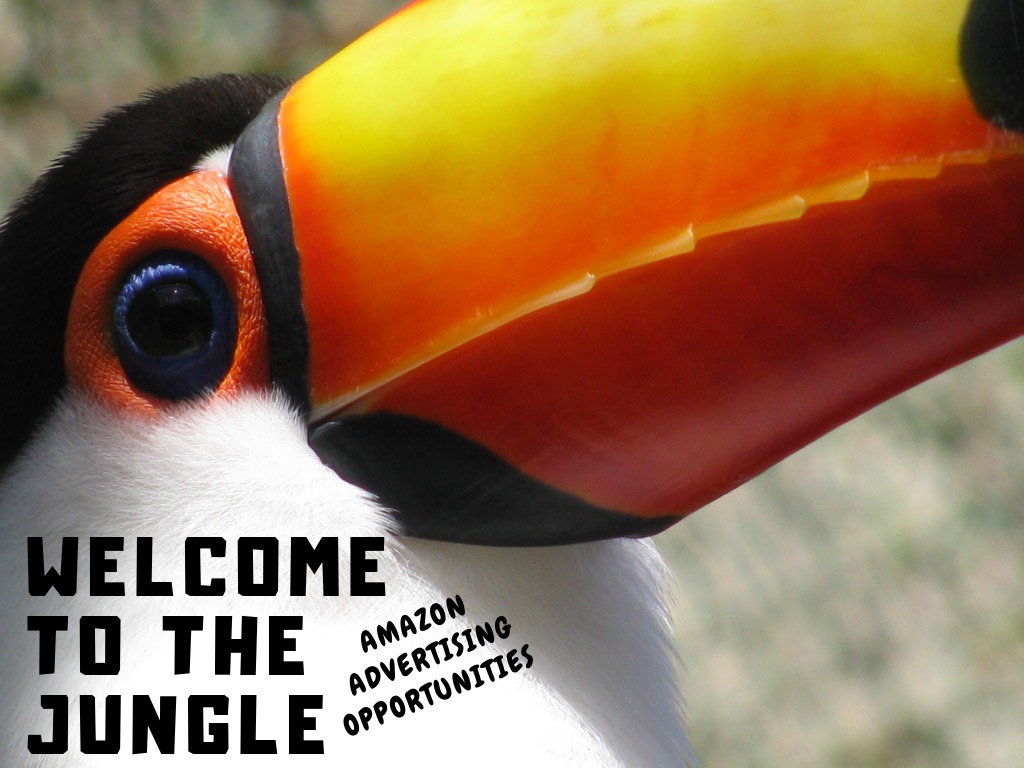
A few weeks ago, we talked about Google Shopping being a great channel for ecommerce clients to drive a positive return on ad spend. But what if you don’t have an ecommerce website? Never fear! Online marketplaces like Amazon are a great way to sell your products without requiring your own ecommerce engine, not to mention the massive audience and daily usage it offers.
But wait, there’s more! Late in 2017, Amazon announced that ‘Amazon Marketing Services’ would expand to Canada. So, what is Amazon Marketing Services, exactly? Let’s find out before everyone and their dog jumps on board.
Getting Started with Amazon
You know what they say, what happens on Amazon, stays on Amazon. To advertise your products on Amazon, you first must be a registered seller or vendor. From there, all of your Amazon ads will drive to product pages from your account. In other words, ads do not drive to external pages or websites, just to your product and store pages on Amazon.
A Jungle of Ad Formats
Think about the last time you searched something on Amazon. Do you remember seeing any ads? I didn’t at first, and that’s because Amazon does a great job of integrating the ads into the ecosystem to make them look natural and native. Just take a look at the screenshot below from when I was recently looking to restock on my protein powder. There are 9 products above the fold, and 7 of them are sponsored ads.
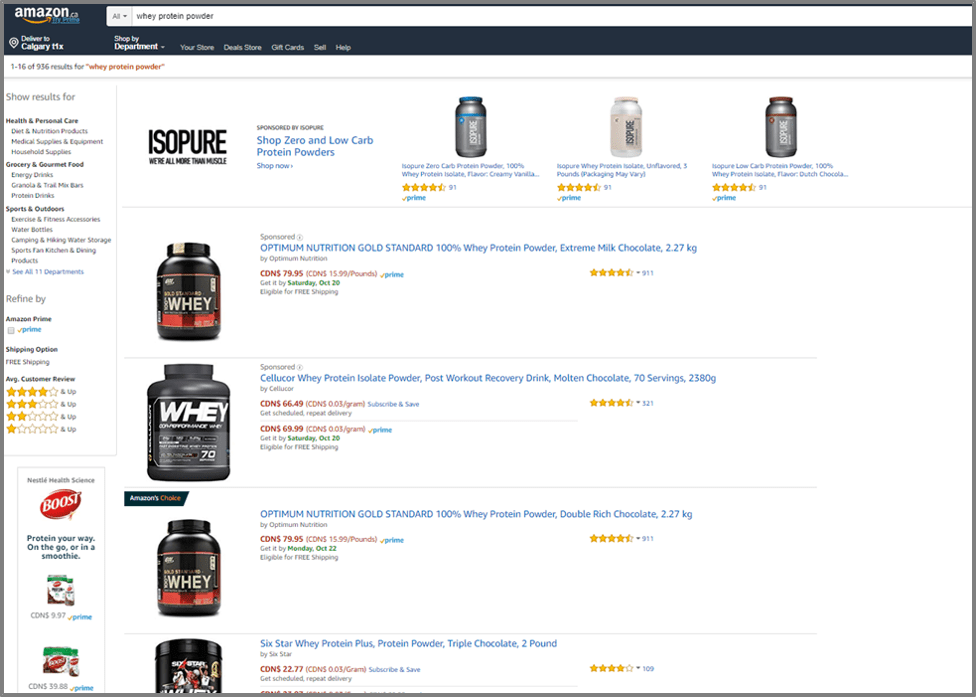
Let’s look at the different types featured in this search result:
Sponsored Brand Ads
The first thing we see at the top of the results is a pretty large ‘ISOPURE’ logo. Next to it (in tiny text) is a label mentioning that the ad is sponsored by ISOPURE. Finally, the remainder of the horizontal banner features three of its products.

If you click on the logo or the headline, it will take me to a page of my choice on my Amazon storefront. If you click on any of the products, it will take you directly to those product pages. These are Sponsored Brand Ads, which were previously called Headline Search Ads. A pretty good placement, if you ask me!
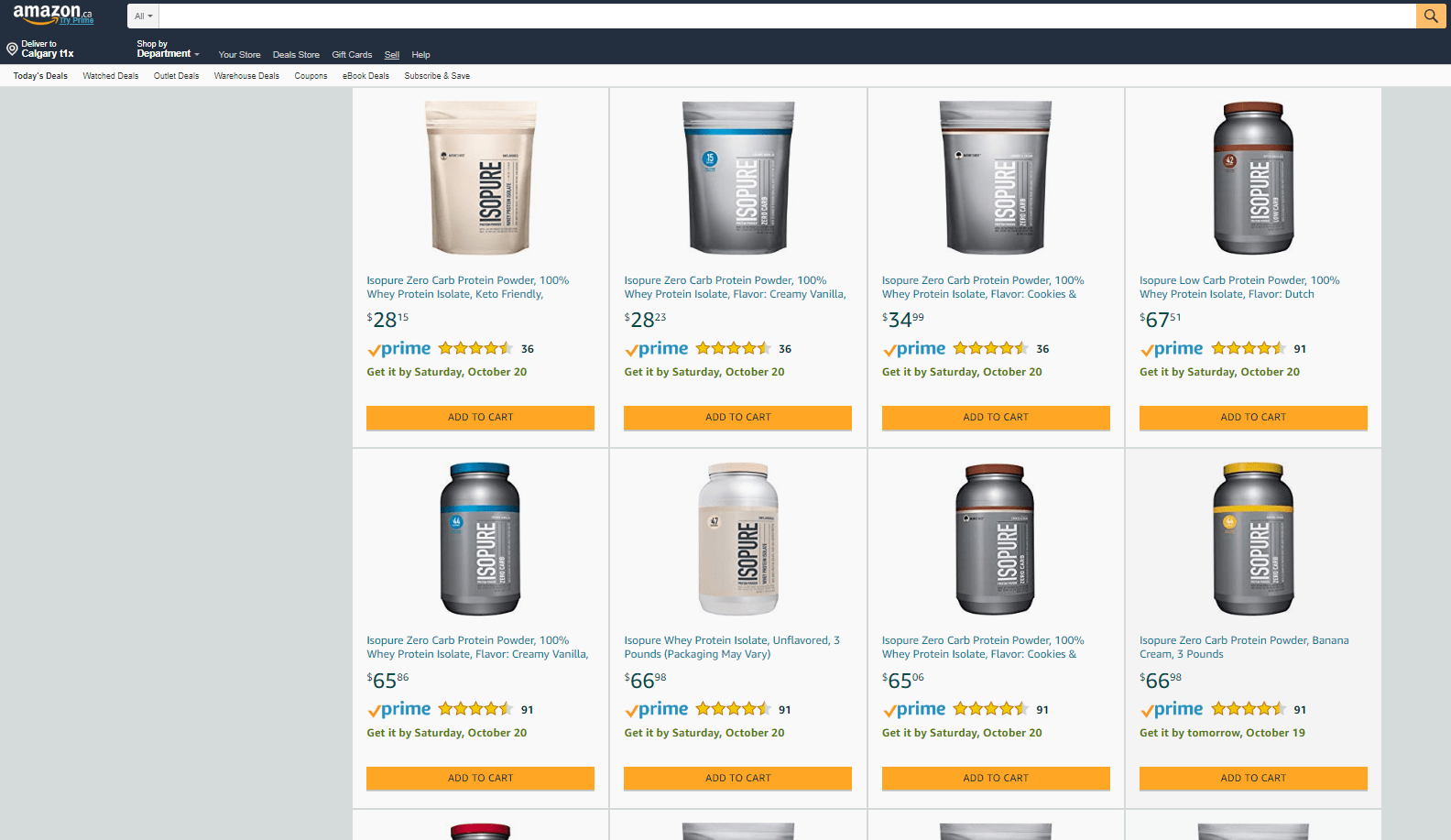
The advertiser gets to choose the logo, headline, and products. Amazon then creates the ad with these elements. You’ll notice another Sponsored Brand Ad on the left-hand side for BOOST drinks, which is actually a responsive ad (just like on Google Display). Say goodbye to the production team making a bunch of sizes! These ads are served based on keyword targeting, and in this scenario, the advertiser has probably targeted ‘whey protein’ or something similar. However, these ads are slightly more restrictive, with a minimum $0.10 CPC and a minimum $100 campaign budget. The campaigns can also only run up to 6 months.
Sponsored Product Ads
Next, we see two relatively normal looking product results, but they have a very small ‘Sponsored’ label at the top.

These are called Sponsored Product Ads. They can show up in result pages or on specific product pages and look very similar to an organic listing. If I click one of these, they will link directly to product pages from the advertiser’s Amazon store. Ads can show up above, beside, or even within the search results. It can also show up as a ‘related product’ when a user is looking at a specific product page. The targeting and cost model is exactly the same as the Sponsored Brand ads; keyword-based and CPC.
Amazon Stores
Think of these as microsites within the Amazon ecosystem. It’s a storefront that you can customize to showcase your products and tell your brand story. It gives you both the benefit of having an ecommerce presence AND a way to showcase your brand story. Amazon Stores can include images, video, links, and, of course, product pages. You can drive your ads to this page, users can get to the page organically in Amazon search results, and you can drive external traffic (such as from a social post) to this page as well. I found one from Vitamix when looking for something to blend up my super-protein smoothies.
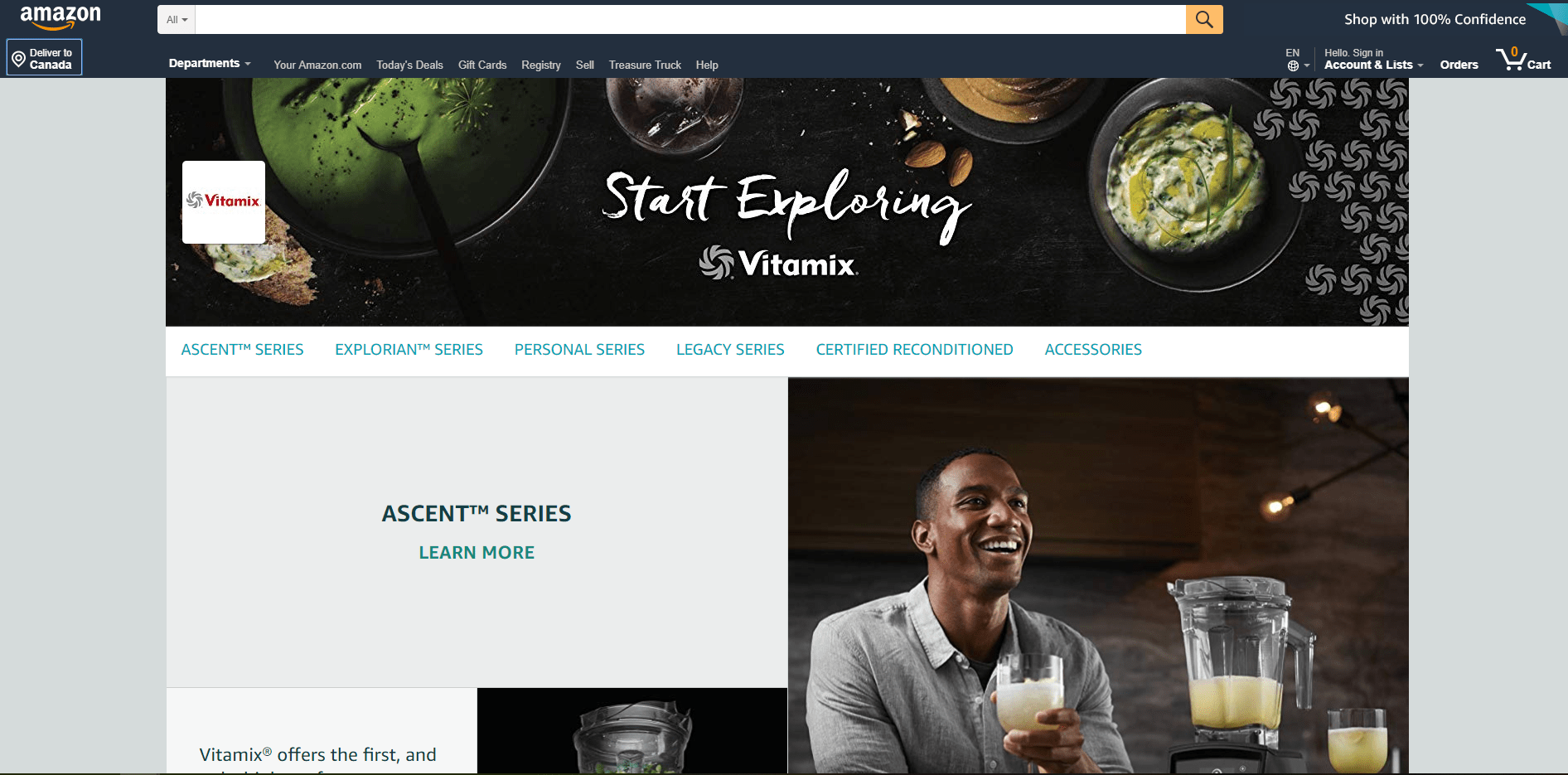
I was looking for something to help take my protein shakes with me on the go, so I visited the “Personal Series” section. Here it gave me an overview of the product category and a short video on all the features and ways I can use the product. Pretty compelling!
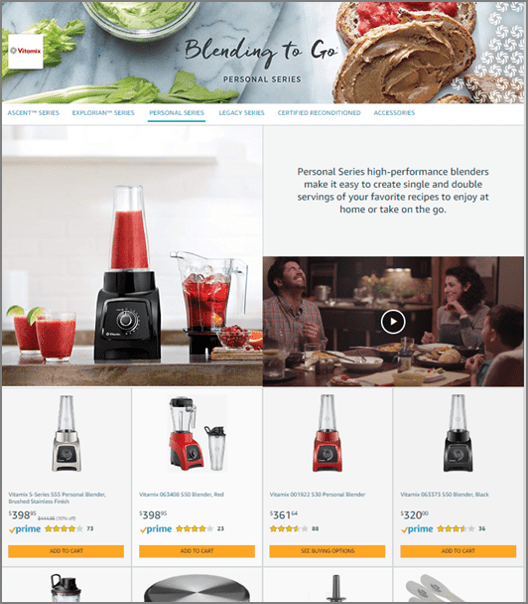
The best part? All of this is plug and play and doesn’t require any web developers or custom coding. All you need are the creative assets. If you want to find out how the pages are doing (just like you would with Google Analytics on a regular website), your Amazon account has an Analytics section to see metrics like unique visitors and demographics of people who visit your store.
Welcome to the Jungle
With what we’ve seen here, I wouldn’t be surprised if Amazon starts to scare good ‘ol Google a little. Amazon is making online selling easier to execute and promote, which is a good sign for retailers across Canada. If you are a Canadian retailer looking to test this out, give us a shout! You’ll be on the cutting edge, and get to learn the ropes before everyone else.
